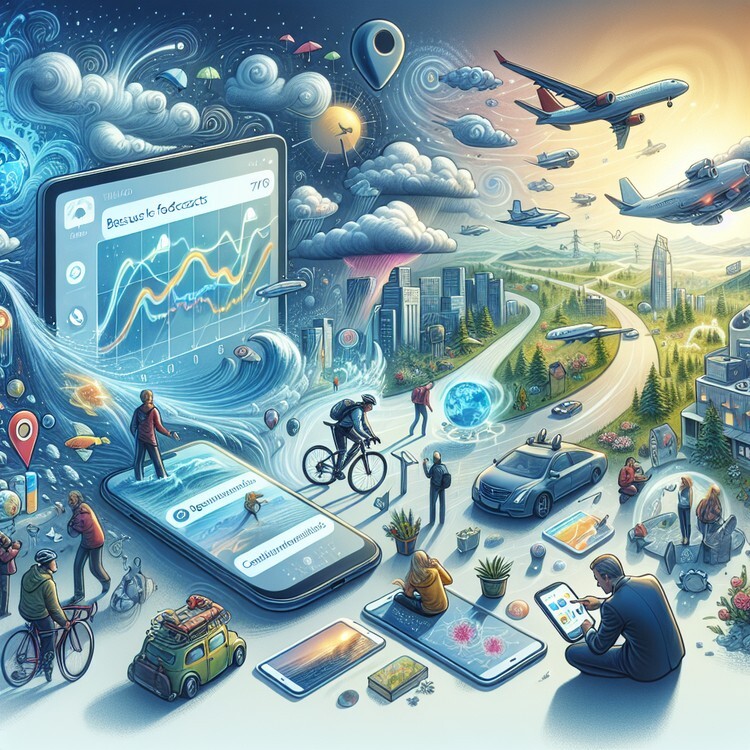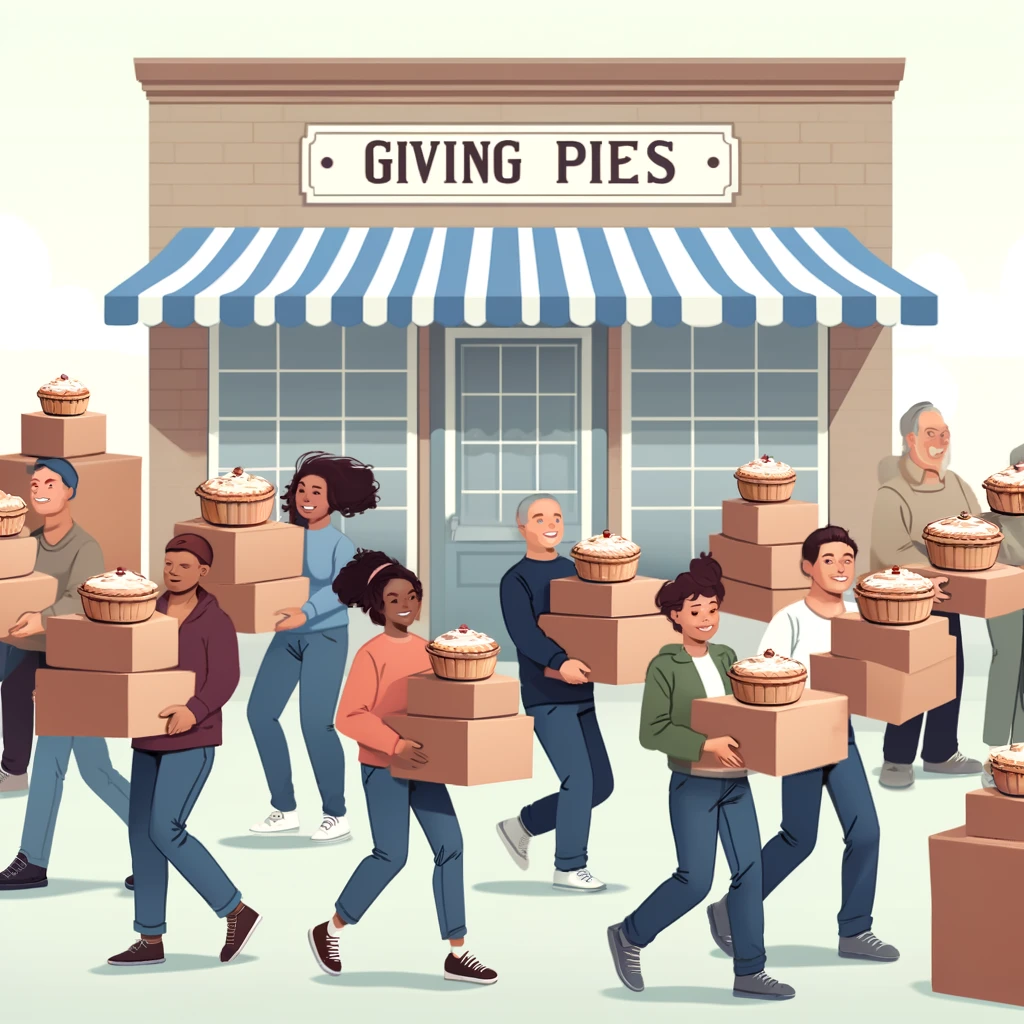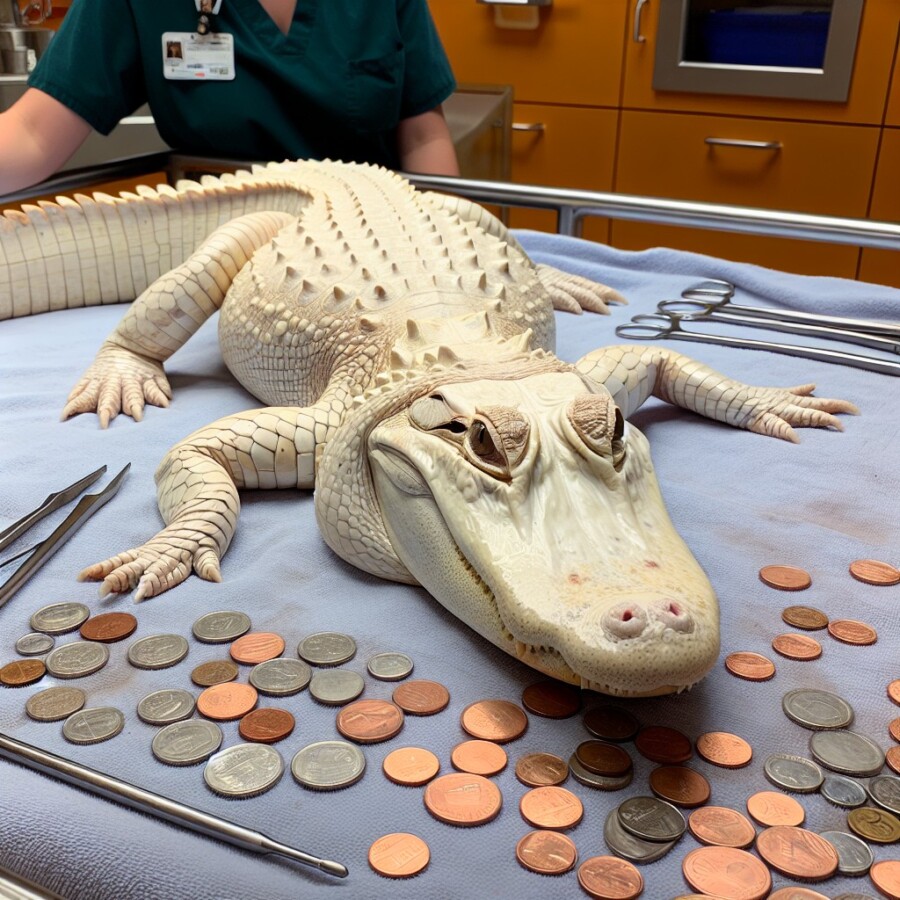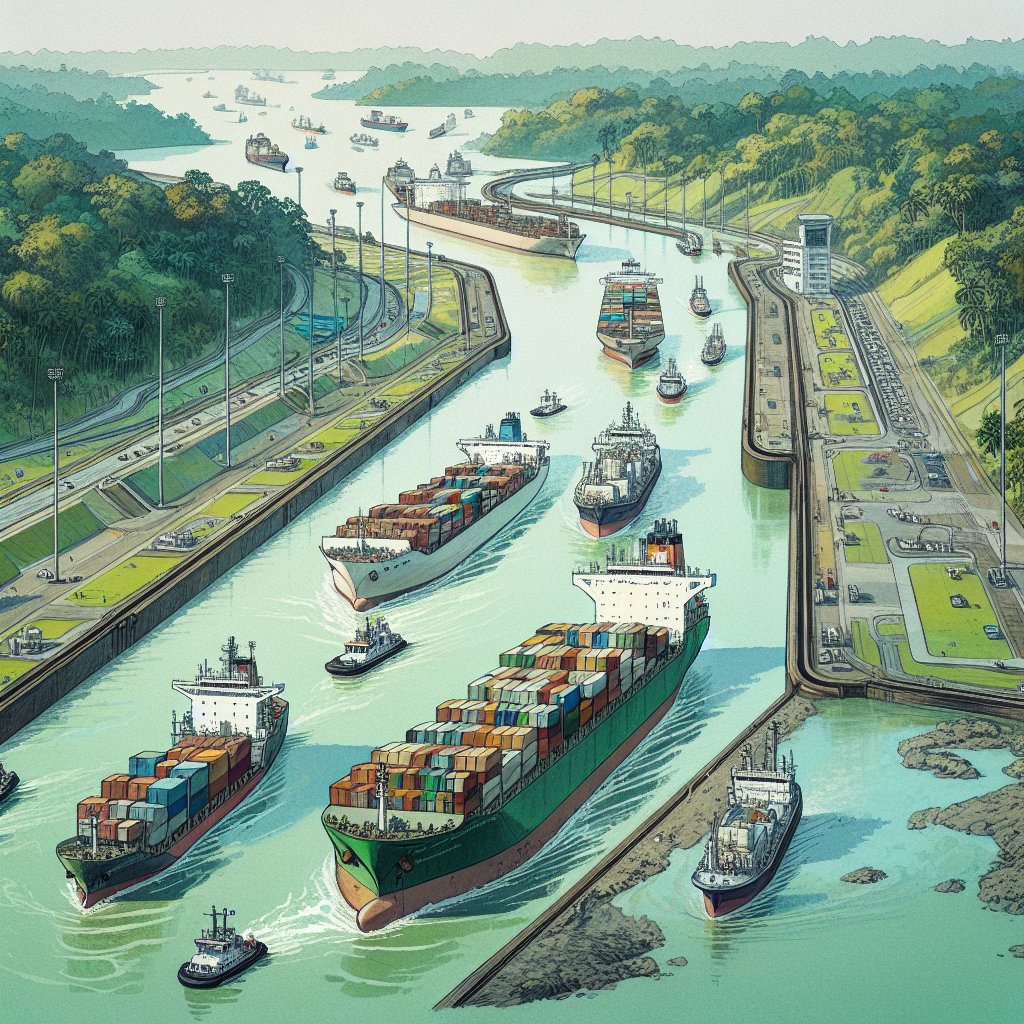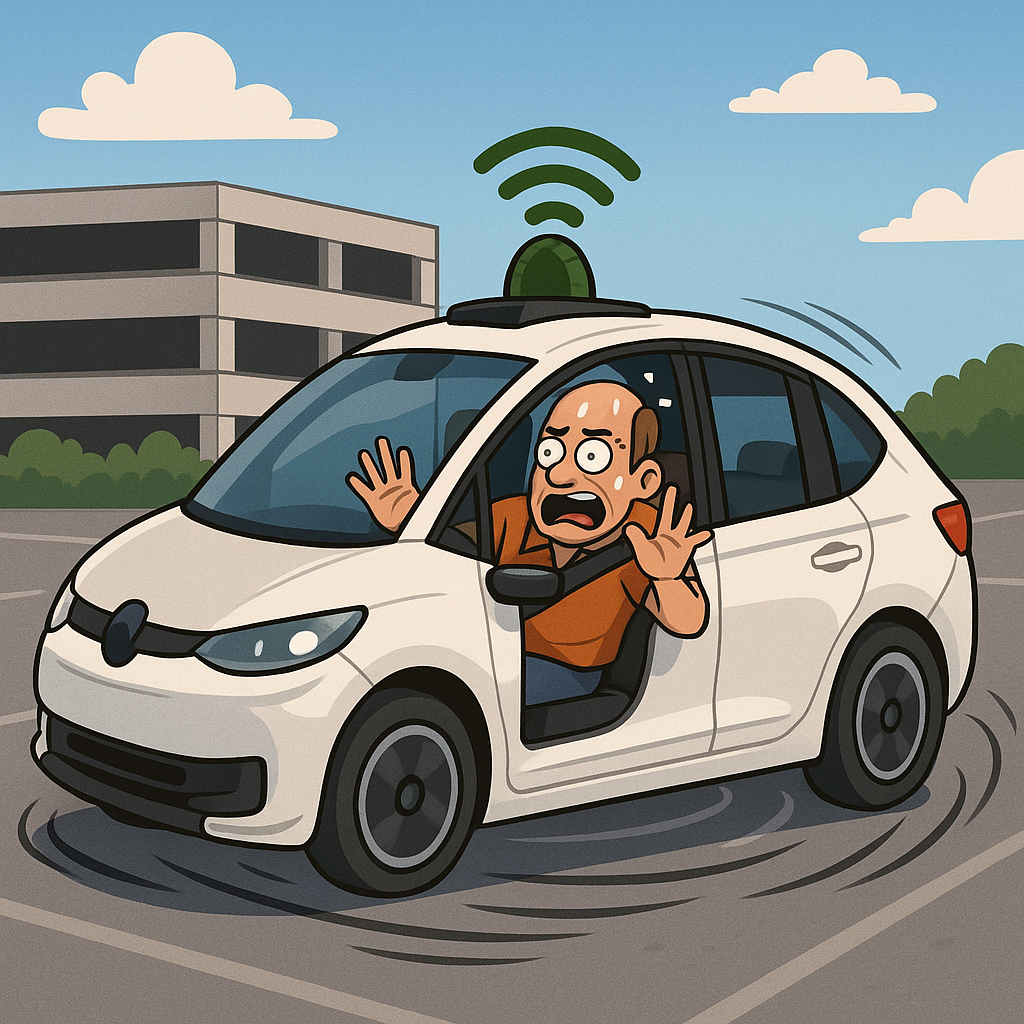Weather apps are getting better at telling us what the weather will be like. They use technology and artificial intelligence to give us real-time updates and personalized recommendations. For example, there’s an app called Windy that helps cyclists like Zoe Ashbridge know which way the wind is blowing. This helps them plan their routes better and save time and energy. The goal of these apps is to keep us safe and protect our things.
The UK’s Met Office has made its digital weather maps and data much better. Now, we can see how the weather is moving in real-time and know what it will be like up to five days in advance. They even have special forecasts for beaches and mountains. These tell us about the wind, waves, and weather at different heights. The Met Office has also teamed up with airlines to get data from sensors on planes. This makes their forecasts more accurate and helps them predict extreme weather and thunderstorms.
Weather forecasters are working hard to give us quick and accurate forecasts, especially because the weather is getting more unpredictable. But it’s not easy for weather app start-ups to get money to develop their apps. Investors in places like Silicon Valley, where a lot of tech investors are, don’t usually experience extreme weather. However, some weather app providers, like Accuweather, are using artificial intelligence to improve language translation and give us more detailed information about the weather. They are also focusing on our health and safety by telling us about air quality, predicting wildfires, and giving us better warnings.
In conclusion, weather apps are using technology and artificial intelligence to give us better and more personalized forecasts. This helps us plan our activities, save time and energy, and make smart choices based on the weather. The main goal is to keep us safe and protect our things. But it’s hard for weather app start-ups to get money because investors in places without extreme weather don’t always see it as a priority.
Original news source: How weather apps are trying to be more accurate (BBC)
Listen:
Slow
Normal
Fast
Vocabulary:
| 1 | artificial intelligence | Computer systems that can perform tasks that would normally require human intelligence |
| 2 | personalized | Tailored or customized to meet individual needs or preferences |
| 3 | forecasts | Predictions or estimates about future weather conditions |
| 4 | unpredictable | Difficult to predict or anticipate |
| 5 | start-ups | New businesses or companies that are just starting out |
| 6 | investors | People who provide money to support a business or project |
| 7 | translation | Converting words or text from one language to another |
| 8 | detailed | Thorough and comprehensive, providing a lot of information |
| 9 | activities | Things that you do for fun or as part of your daily routine |
| 10 | smart choices | Making intelligent decisions based on careful thought and consideration |
| 11 | priority | Something that is seen as being more important or deserving of attention |
| 12 | accurate | Precise, correct, and without errors |
| 13 | extreme weather | Severe or unusual weather conditions, such as hurricanes or blizzards |
| 14 | health and safety | Concerned with the well-being and protection of people’s health and safety |
| 15 | wildfires | Uncontrolled fires that spread quickly and destroy large areas of land |
Group or Classroom Activities
Warm-up Activities:
– News Summary
Instructions: In this activity, students will work in pairs or small groups to summarize the main points of the article. Each group will take turns presenting their summaries to the class. Encourage students to use their own words and focus on the key information.
– Opinion Poll
Instructions: Divide the class into small groups and give each group a set of questions related to the article. The questions can be about their own experiences with weather apps or their opinions on the use of artificial intelligence in forecasting. Have each group discuss and record their answers, then share their opinions with the rest of the class.
– Vocabulary Pictionary
Instructions: Create a list of vocabulary words from the article and write each word on a separate piece of paper or index card. Divide the class into two teams and have one student from each team come to the front of the class. Show them a word and give them one minute to draw a picture to represent that word. The rest of the team must guess the word based on the drawing. Alternate between teams and keep score to see which team can guess the most words correctly.
– Pros and Cons
Instructions: Divide the class into pairs or small groups and have them discuss the pros and cons of using weather apps. Encourage students to think critically and consider both the benefits and drawbacks of relying on technology for weather forecasts. After the discussion, have each group share their ideas with the rest of the class.
– Future Predictions
Instructions: In this activity, students will work in pairs or small groups to make predictions about the future of weather apps. They can discuss how technology and artificial intelligence may continue to improve forecasting accuracy, as well as any potential challenges or concerns. Each group will present their predictions to the class, and students can engage in a discussion about the possibilities.
Comprehension Questions:
1. How do weather apps use technology and artificial intelligence to give us real-time updates and personalized recommendations?
2. How does the app Windy help cyclists like Zoe Ashbridge plan their routes better?
3. What improvements has the UK’s Met Office made to its digital weather maps and data?
4. How does the Met Office get data from sensors on planes to make their forecasts more accurate?
5. Why is it difficult for weather app start-ups to get money to develop their apps?
6. How is Accuweather using artificial intelligence to improve language translation and provide more detailed weather information?
7. Besides giving forecasts, what other aspects of our health and safety are weather apps like Accuweather focusing on?
8. What is the main goal of weather apps, according to the article?
Go to answers ⇩
Listen and Fill in the Gaps:
Weather apps are getting better at (1)______ us what the weather will be like. They use technology and artificial (2)______ to give us real-time updates and personalized recommendations. For example, there’s an app called Windy that helps cyclists like Zoe (3)______ know which way the wind is blowing. This helps them plan their (4)______ better and save time and energy. The goal of these apps is to keep us safe and protect our things.
The UK’s Met Office has made its digital weather maps and data much better. Now, we can see how the (5)______ is (6)______ in real-time and know what it will be like up to five days in advance. They even have special (7)______ for beaches and mountains. These tell us about the wind, waves, and weather at different heights. The Met Office has also teamed up with airlines to get data from sensors on planes. This makes their forecasts more accurate and helps them predict extreme weather and thunderstorms.
Weather forecasters are (8)______ hard to give us quick and accurate forecasts, especially because the weather is (9)______ more unpredictable. But it’s not easy for weather app start-ups to get money to develop their apps. Investors in places like Silicon (10)______, where a lot of tech investors are, don’t usually experience (11)______ weather. However, some weather app (12)______, like Accuweather, are using artificial intelligence to improve language translation and give us more detailed information about the weather. They are also focusing on our health and safety by telling us about air quality, predicting wildfires, and (13)______ us better warnings.
In conclusion, weather apps are using technology and artificial intelligence to give us better and more personalized forecasts. This helps us plan our activities, save time and energy, and make smart choices (14)______ on the weather. The main goal is to keep us safe and protect our things. But it’s hard for weather app start-ups to get money because (15)______ in (16)______ without extreme weather don’t always see it as a priority.
Go to answers ⇩
Discussion Questions:
Students can ask a partner these questions, or discuss them as a group.
1. What is a weather app?
2. How would you feel if you didn’t have a weather app to check the forecast?
3. Do you like using weather apps? Why or why not?
4. How do weather apps use technology and artificial intelligence to give us better forecasts?
5. Do you think it’s important for weather apps to give us personalized recommendations? Why or why not?
6. What are some ways that weather apps can help us save time and energy?
7. Why do you think the Met Office has teamed up with airlines to get data from sensors on planes?
8. How do weather app start-ups face challenges in getting money to develop their apps?
9. Do you think investors in places without extreme weather should prioritize funding weather app start-ups? Why or why not?
10. How can artificial intelligence improve language translation in weather apps?
11. What are some examples of how weather apps can focus on our health and safety?
12. Why is it important for weather apps to give us better warnings?
13. How do weather apps help us make smart choices based on the weather?
14. Do you think weather apps will continue to improve in the future? Why or why not?
15. How do you think weather apps can continue to keep us safe and protect our things?
Individual Activities
Vocabulary Meanings:
Match each word to its meaning.
Words:
1. artificial intelligence
2. personalized
3. forecasts
4. unpredictable
5. start-ups
6. investors
7. translation
8. detailed
9. activities
10. smart choices
11. priority
12. accurate
13. extreme weather
14. health and safety
15. wildfires
Meanings:
(A) Tailored or customized to meet individual needs or preferences
(B) Precise, correct, and without errors
(C) Severe or unusual weather conditions, such as hurricanes or blizzards
(D) People who provide money to support a business or project
(E) Things that you do for fun or as part of your daily routine
(F) Predictions or estimates about future weather conditions
(G) Uncontrolled fires that spread quickly and destroy large areas of land
(H) Thorough and comprehensive, providing a lot of information
(I) Converting words or text from one language to another
(J) New businesses or companies that are just starting out
(K) Computer systems that can perform tasks that would normally require human intelligence
(L) Making intelligent decisions based on careful thought and consideration
(M) Difficult to predict or anticipate
(N) Something that is seen as being more important or deserving of attention
(O) Concerned with the well-being and protection of people’s health and safety
Go to answers ⇩
Multiple Choice Questions:
1. How do weather apps use technology and artificial intelligence?
(a) To give us real-time updates and personalized recommendations
(b) To track our location and sell our data
(c) To make phone calls and send text messages
(d) To play games and watch videos
2. What is the goal of weather apps?
(a) To make money from selling our information
(b) To control the weather
(c) To entertain us with funny videos
(d) To keep us safe and protect our things
3. What can the app Windy help cyclists like Zoe Ashbridge with?
(a) Knowing which way the wind is blowing
(b) Finding the best restaurants in town
(c) Booking a hotel room
(d) Learning how to ride a bike
4. How many days in advance can we now see the weather with the UK’s Met Office?
(a) Up to ten days
(b) Up to two days
(c) Up to five days
(d) Up to one month
5. What kind of forecasts does the Met Office have for beaches and mountains?
(a) Forecasts about the best time to go swimming
(b) Forecasts about the best hiking trails
(c) Forecasts about the best places to sunbathe
(d) Forecasts about wind, waves, and weather at different heights
6. How does the Met Office make their forecasts more accurate?
(a) By asking people on the street for their opinions
(b) By using magic and fortune-telling
(c) By getting data from sensors on planes
(d) By guessing randomly
7. Why is it difficult for weather app start-ups to get money?
(a) Because they don’t have good ideas
(b) Because investors in places without extreme weather don’t see it as a priority
(c) Because they don’t know how to use technology
(d) Because they are too expensive to develop
8. What are some ways weather app providers like Accuweather are using artificial intelligence?
(a) Making funny jokes and telling stories
(b) Improving language translation and giving more detailed information about the weather
(c) Selling our personal information to advertisers
(d) Controlling the weather and causing storms
Go to answers ⇩
True or False Questions:
1. The Met Office has not partnered with airlines to gather data from sensors on planes, making their forecasts less accurate and hindering their ability to predict extreme weather and thunderstorms.
2. Weather apps are using technology and artificial intelligence to give us real-time updates and personalized recommendations.
3. The main goal of weather apps is to keep us safe and protect our belongings.
4. There is no app called Windy that helps cyclists know which way the wind is blowing.
5. Weather apps are focusing on our health and safety by providing information on air quality, predicting wildfires, and giving better warnings.
6. Weather app start-ups have difficulty getting funding from investors in places without extreme weather, like Silicon Valley.
7. Accuweather is not using artificial intelligence to improve language translation and provide more detailed weather information.
8. The UK’s Met Office has worsened its analog weather maps and data, preventing us from seeing how the weather is moving in real-time and knowing what it will be like up to five days in advance.
Go to answers ⇩
Write a Summary:
Write a summary of this news article in two sentences.
Check your writing now with the best free AI for English writing!
Writing Questions:
Answer the following questions. Write as much as you can for each answer.
Check your answers with our free English writing assistant!
1. How do weather apps use technology and artificial intelligence to provide personalized recommendations?
2. What is the benefit of using the app Windy for cyclists like Zoe Ashbridge?
3. How has the UK’s Met Office improved its digital weather maps and data?
4. How do sensors on planes help the Met Office make more accurate forecasts?
5. How are weather app providers like Accuweather using artificial intelligence to improve their services?
Answers
Comprehension Question Answers:
1. Weather apps use technology and artificial intelligence to collect data from various sources, such as satellites and weather stations. This data is then analyzed and processed using algorithms to provide real-time updates and personalized recommendations based on the user’s location and preferences.
2. The app Windy helps cyclists like Zoe Ashbridge by providing information about the direction and strength of the wind. This allows cyclists to plan their routes in a way that takes advantage of tailwinds and avoids headwinds, helping them save time and energy.
3. The UK’s Met Office has made its digital weather maps and data much better by improving their accuracy and providing more detailed information. Users can now see how the weather is moving in real-time and have access to forecasts up to five days in advance. The Met Office has also developed specialized forecasts for beaches and mountains, which include information about wind, waves, and weather at different altitudes.
4. The Met Office gets data from sensors on planes by collaborating with airlines. These sensors collect information about temperature, humidity, and air pressure, which can be used to improve the accuracy of weather forecasts. By incorporating this data into their models, the Met Office can better predict extreme weather events and thunderstorms.
5. It is difficult for weather app start-ups to get money because investors in places without extreme weather may not see it as a priority. Since weather apps are more relevant and useful in areas prone to extreme weather conditions, investors in regions with milder climates may not fully understand the potential value of these apps.
6. Accuweather is using artificial intelligence to improve language translation by developing algorithms that can accurately translate weather information into different languages. This allows users from different countries to access detailed weather forecasts in their native language. Additionally, Accuweather is using AI to provide more detailed weather information by analyzing a wide range of data sources and incorporating factors such as air quality, wildfire predictions, and enhanced warning systems.
7. Besides giving forecasts, weather apps like Accuweather are focusing on aspects of our health and safety by providing information about air quality, predicting wildfires, and giving better warnings for severe weather events. This helps users make informed decisions and take necessary precautions to protect their health and well-being.
8. The main goal of weather apps, according to the article, is to keep us safe and protect our things. By providing accurate and personalized forecasts, these apps help us plan our activities, save time and energy, and make smart choices based on the weather conditions.
Go back to questions ⇧
Listen and Fill in the Gaps Answers:
(1) telling
(2) intelligence
(3) Ashbridge
(4) routes
(5) weather
(6) moving
(7) forecasts
(8) working
(9) getting
(10) Valley
(11) extreme
(12) providers
(13) giving
(14) based
(15) investors
(16) places
Go back to questions ⇧
Vocabulary Meanings Answers:
1. artificial intelligence
Answer: (K) Computer systems that can perform tasks that would normally require human intelligence
2. personalized
Answer: (A) Tailored or customized to meet individual needs or preferences
3. forecasts
Answer: (F) Predictions or estimates about future weather conditions
4. unpredictable
Answer: (M) Difficult to predict or anticipate
5. start-ups
Answer: (J) New businesses or companies that are just starting out
6. investors
Answer: (D) People who provide money to support a business or project
7. translation
Answer: (I) Converting words or text from one language to another
8. detailed
Answer: (H) Thorough and comprehensive, providing a lot of information
9. activities
Answer: (E) Things that you do for fun or as part of your daily routine
10. smart choices
Answer: (L) Making intelligent decisions based on careful thought and consideration
11. priority
Answer: (N) Something that is seen as being more important or deserving of attention
12. accurate
Answer: (B) Precise, correct, and without errors
13. extreme weather
Answer: (C) Severe or unusual weather conditions, such as hurricanes or blizzards
14. health and safety
Answer: (O) Concerned with the well-being and protection of people’s health and safety
15. wildfires
Answer: (G) Uncontrolled fires that spread quickly and destroy large areas of land
Go back to questions ⇧
Multiple Choice Answers:
1. How do weather apps use technology and artificial intelligence?
Answer: (a) To give us real-time updates and personalized recommendations
2. What is the goal of weather apps?
Answer: (d) To keep us safe and protect our things
3. What can the app Windy help cyclists like Zoe Ashbridge with?
Answer: (a) Knowing which way the wind is blowing
4. How many days in advance can we now see the weather with the UK’s Met Office?
Answer: (c) Up to five days
5. What kind of forecasts does the Met Office have for beaches and mountains?
Answer: (d) Forecasts about wind, waves, and weather at different heights
6. How does the Met Office make their forecasts more accurate?
Answer: (c) By getting data from sensors on planes
7. Why is it difficult for weather app start-ups to get money?
Answer: (b) Because investors in places without extreme weather don’t see it as a priority
8. What are some ways weather app providers like Accuweather are using artificial intelligence?
Answer: (b) Improving language translation and giving more detailed information about the weather
Go back to questions ⇧
True or False Answers:
1. The Met Office has not partnered with airlines to gather data from sensors on planes, making their forecasts less accurate and hindering their ability to predict extreme weather and thunderstorms. (Answer: False)
2. Weather apps are using technology and artificial intelligence to give us real-time updates and personalized recommendations. (Answer: True)
3. The main goal of weather apps is to keep us safe and protect our belongings. (Answer: True)
4. There is no app called Windy that helps cyclists know which way the wind is blowing. (Answer: False)
5. Weather apps are focusing on our health and safety by providing information on air quality, predicting wildfires, and giving better warnings. (Answer: True)
6. Weather app start-ups have difficulty getting funding from investors in places without extreme weather, like Silicon Valley. (Answer: True)
7. Accuweather is not using artificial intelligence to improve language translation and provide more detailed weather information. (Answer: False)
8. The UK’s Met Office has worsened its analog weather maps and data, preventing us from seeing how the weather is moving in real-time and knowing what it will be like up to five days in advance. (Answer: False)
Go back to questions ⇧



